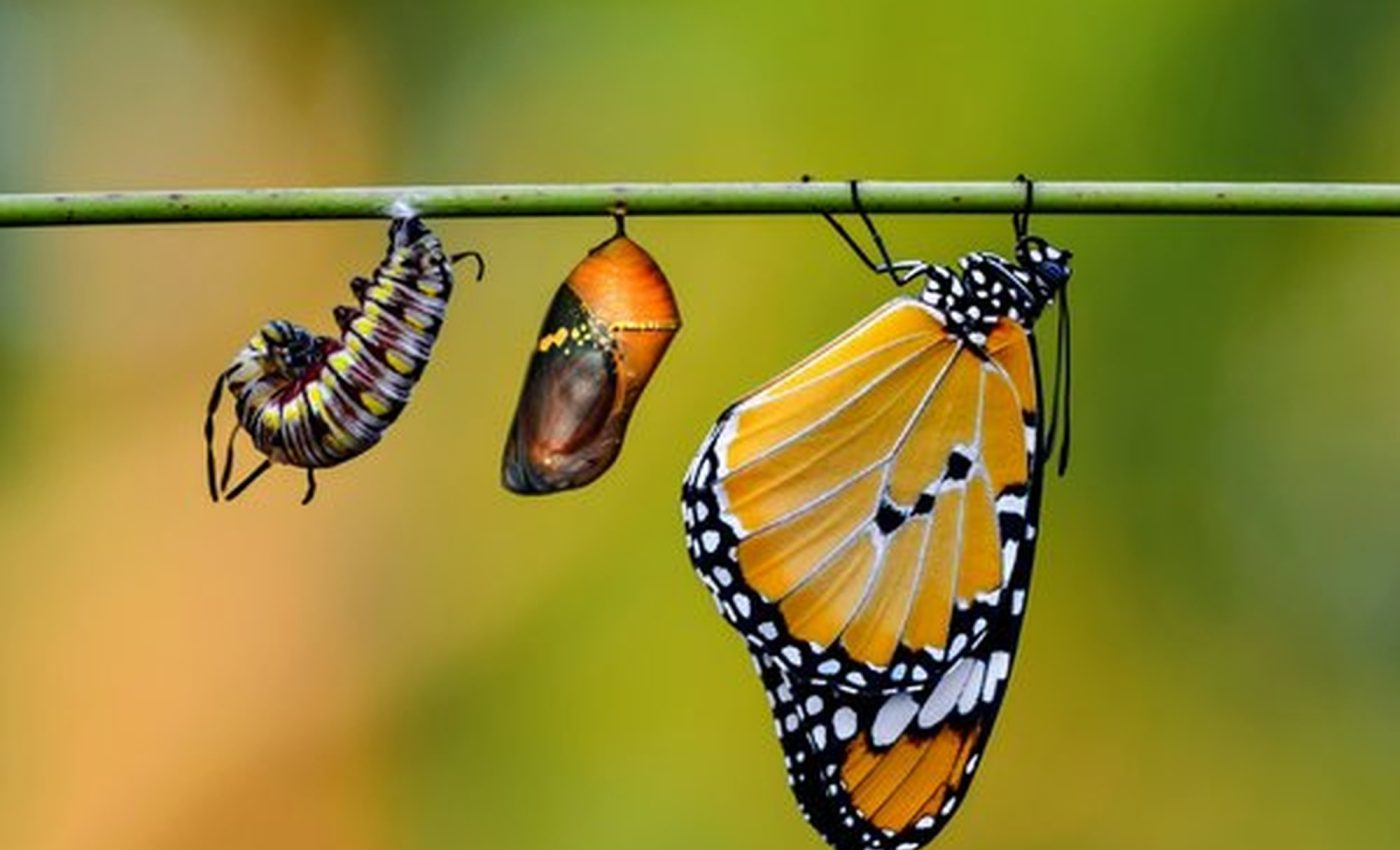
Butterflies create silk 'seatbelts' to strap in for metamorphosis
Have you ever wondered how butterflies remain firmly attached to branches during their fascinating transformation, known as metamorphosis? The answer springs from the world of these tiny yet mighty creatures, revealing a remarkable testament to nature’s ingenuity.
Researchers Qingyou Xia and Zhaoming Dong have explored the familiar yet enigmatic realm of butterfly metamorphosis. The team made some unexpected discoveries about their ability to stay anchored during this critical period of life.
Silk’s role in the metamorphosis of butterflies
While we may often associate silk with the industrious silkworm, our fluttering friends – the butterflies – also play their part in this web of life.
In their caterpillar stage, the future butterflies leverage silk for many purposes: to build safety nets that protect them from falls, to create ingenious hiding spots within leaf bundles, and to craft silk carpets that play a crucial role during metamorphosis.
When it’s time for a caterpillar to morph into a chrysalis, it utilizes a unique structure known as a cremaster. This arm-like feature grips onto the spun silk carpet, anchoring the chrysalis to a branch and providing a stable base for the miraculous transformation about to unfold.
Strength of the silk
The researchers raised caterpillars of two species of butterflies – Danaus chrysippus, also known as the Plain Tiger, and Papilio polytes, or Common Mormon – along with two species of silkworms in controlled environments. They then measured the diameter and tensile strength of the silk threads spun by these creatures.
The results showed that despite its utility, butterfly silk, surprisingly, was thinner and weaker compared to that spun by silkworms.
When the experts analyzed the primary structural proteins in the silks, they found that butterfly silk had a lesser number of beta sheet structures, explaining its relative weakness.
Butterflies, however, are not daunted by the weakness of their silk. Instead, they employ unique and intricate strategies to maximize their silk’s efficiency. They use the cremaster in a hook and loop mechanism, much like a Velcro fastener, to attach themselves firmly to the silk carpet.
Some species even spin a safety tether around their thorax for added security. It’s this ingenious application of relatively weak silk that ensures the chrysalis stays put until it’s time for the butterfly to emerge.
Chrysalis stage of butterfly metamorphosis
The chrysalis stage is not just a transitional phase; it is vital for the development of a butterfly’s body. During this period, the caterpillar’s cells undergo a remarkable transformation, reorganizing into newly formed tissues and organs essential for the adult butterfly.
This complex process is known as histolysis, where the caterpillar tissues break down, and histogenesis, where new structures develop.
The resilience of the chrysalis, which protects the delicate developing butterfly within, highlights the importance of a secure anchoring system that comes from the silk and cremaster interplay, ensuring the transformation can occur without disturbance.
After days or weeks of transformation, the moment arrives for the butterfly to break free from its chrysalis. With tremendous energy, the freshly emerged butterfly struggles to escape, often taking several minutes to fully unfurl its damp wings.
This process is crucial, as it not only strengthens the wings but also helps pump fluid into them, allowing for proper expansion and eventual flight.
Silk seatbelt in butterfly metamorphosis
When forming their protective “seatbelts,” caterpillars can spin together nearly 20 different strands into a rope-like form, multiplying its strength eight-fold. This illustrates that these creatures are not mere victims of their circumstances but active agents who make the best of what they have.
The diligent work of researchers like Xia, Dong, and their team provides us with an enlightening peek into these marvelous strategies that caterpillars use to remain safe and secure until they take flight in their final, radiant butterfly forms.
This study was funded by the National Natural Science Foundation of China, the National Key Research and Development Program of China, the Natural Science Foundation of Chongqing, and the Fundamental Research Funds for the Central Universities.
So, the next time you see a butterfly fluttering by, take a moment to appreciate its remarkable journey. Against all odds, it has managed to stick to branches, overcome its limitations, and transform into the absolute beauty we behold.
The study is published in the journal ACS Biomaterials Science & Engineering.
—–
Like what you read? Subscribe to our newsletter for engaging articles, exclusive content, and the latest updates.
Check us out on EarthSnap, a free app brought to you by Eric Ralls and Earth.com.
—–













